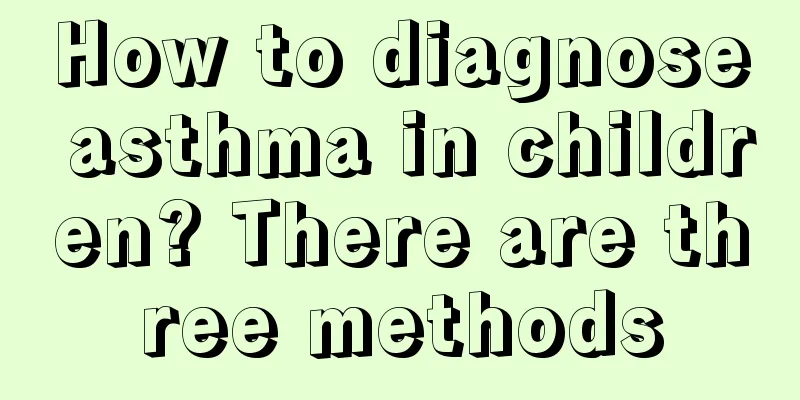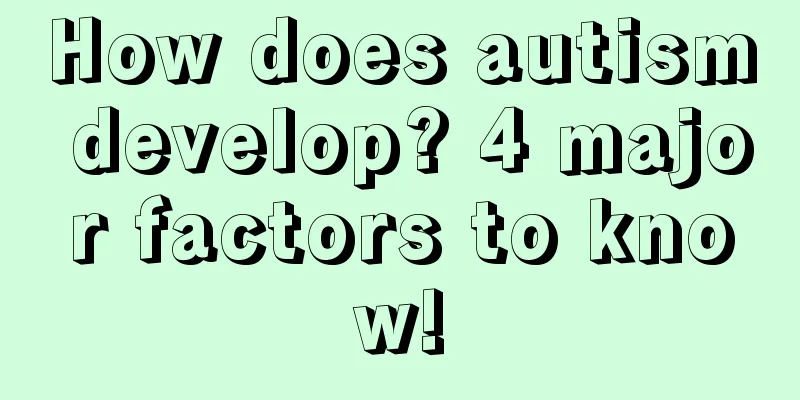How to diagnose asthma in children? There are three methods

|
Asthma in children is a disease with a relatively high incidence rate in daily life. It has a serious impact on children's physical health and development. Therefore, parents should take their children to the hospital for examination in time after discovering that their children have symptoms of asthma, so as to achieve early detection and early treatment to avoid missing the best time for treatment. So how do you diagnose asthma in children? In fact, you can just do the following three tests. 1 Diagnosis of childhood asthma: chest X-ray examination How to diagnose asthma in children? A chest X-ray should be taken to exclude lung parenchymal lesions, congenital abnormalities, foreign body signs, etc. During an acute asthma attack, the chest radiograph may be normal or may show emphysema, peribronchial interstitial infiltrates, and atelectasis. Pneumothorax and mediastinal emphysema are occasionally seen. When a child has an asthma attack, wheezing sounds, mainly due to exhalation, can be heard in both lungs. 2 Diagnosis of childhood asthma: lung function test How to diagnose asthma in children? Using bronchodilators has a significant effect on cough and asthma; For children with suspected asthma whose FEV1 ≥ 70% of the normal predicted value, a bronchial provocation test can be selected to measure airway responsiveness. For children with suspected asthma whose FEV1 < 70% of the normal predicted value, a bronchial dilation test can be selected to evaluate the reversibility of airflow limitation. A positive bronchial provocation test, a positive bronchial dilation test, or a daily PEF variation rate (continuous monitoring for 1 to 2 weeks) ≥ 20% are all helpful in diagnosing asthma. 3 Allergen testing - rule out other diseases that cause wheezing, chest tightness and coughing How to diagnose childhood asthma? If other diseases that cause wheezing, chest tightness and cough are ruled out, childhood asthma can be diagnosed through allergen testing (skin prick test), blood tests, blood routine tests, lung function tests and other tests. Sensitization to inhaled allergens is the main risk factor for children to develop persistent asthma. Food sensitization in early childhood can increase the risk of sensitization to inhaled allergens and predict the occurrence of persistent asthma. Therefore, for all children with recurrent wheezing and suspected asthma, especially preschool children who are unable to cooperate with pulmonary function tests, allergen skin prick tests or serum allergen-specific IgE measurements are recommended to understand the patient's allergic status and assist in the diagnosis of asthma. Reminder: When a child repeatedly suffers from bronchitis, pneumonia or repeated coughing, accompanied by wheezing, has a family history of asthma and a personal history of allergies (eczema, allergic rhinitis, urticaria, etc.), asthma should be highly suspected and the child should go to a pediatric asthma specialist for further examination and diagnosis. |
<<: Why are children thin? What should they eat more?
>>: What should parents do if their children have cavities in their baby teeth?
Recommend
What to do if a child has a sore in his mouth_What to do if a baby has a sore in his mouth
The sores in the baby's mouth are usually cal...
What to do if your 8-month-old baby can't crawl
Nowadays, due to environmental restrictions, many...
Is urticaria in children serious?
Generally speaking, urticaria in children should ...
Two-year-old baby always itches
In the summer, mosquito bites are very common, es...
What causes babies to spit up?
Every mother has experience in raising children. ...
White lumps on baby's gums
The baby is now in the golden period of growth, s...
Why do children have swollen bags under their eyes?
Everyone thinks that eye bags are a phenomenon th...
What to do if your baby has rhinitis and nasal congestion
Because babies have poor body resistance, it is e...
What are the recipes for baby's appetite and spleen?
Babies are the hope of their parents and the futu...
How to prevent children from yawning frequently
Yawning is a very common behavior among children,...
What causes a child to have a fever and diarrhea?
After having a child, every parent will put the c...
What is breakfast for a three-year-old?
For mothers who have three-year-old children at h...
What are the symptoms of cerebral palsy in babies?
Because people nowadays only have physical examin...
What to do if your child has dry hair
Dry hair is a very troublesome problem, especiall...
Precautions after phimosis surgery in children
Phimosis has a great impact and harm on adult mal...









